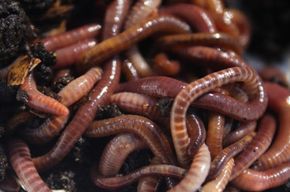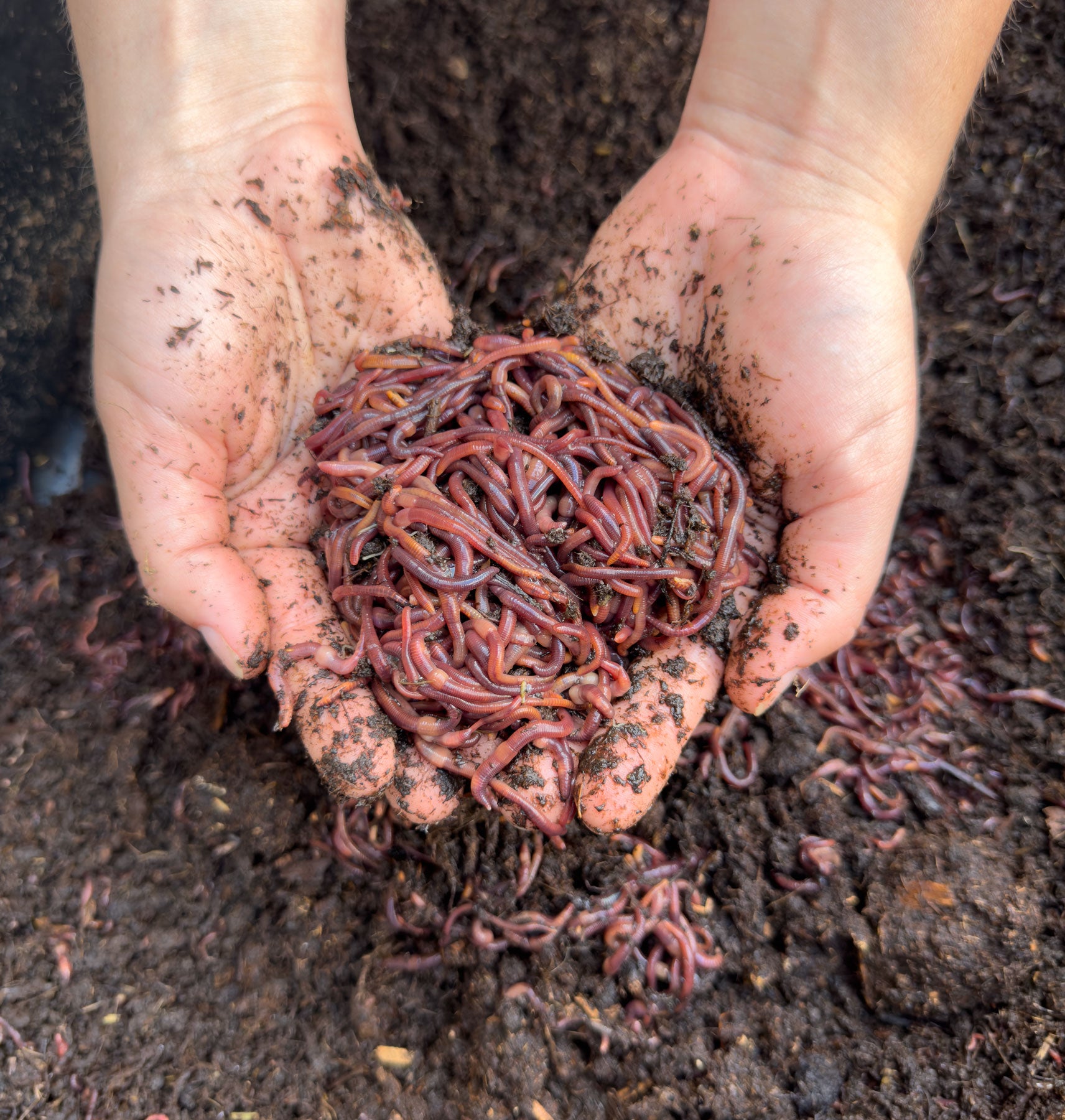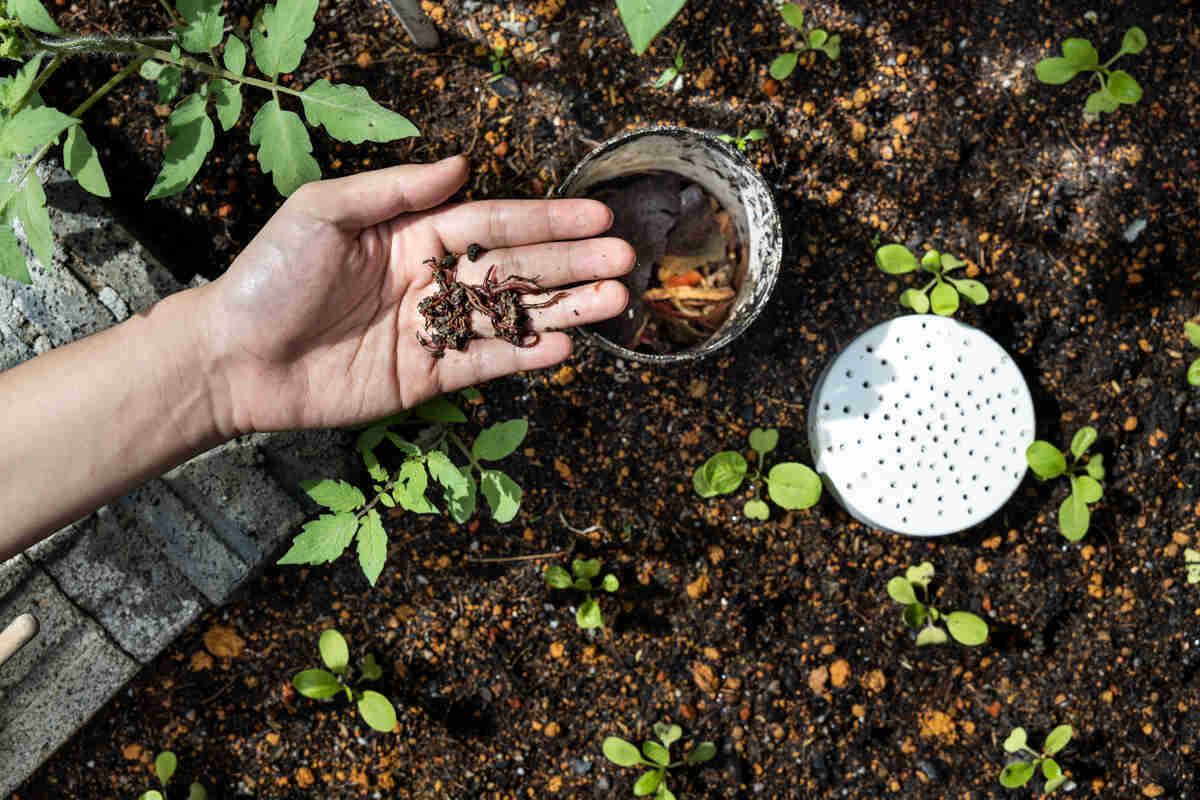Recognizing the Benefits of Red Wiggler Composting: Just How This Reliable Approach Changes Organic Waste Into Nutrient-Rich Soil Modifications
Red Wiggler composting, employing the species Eisenia fetida, presents a compelling strategy to natural waste administration, converting kitchen scraps and yard particles right into useful soil amendments. This approach not just improves soil fertility yet additionally addresses pressing environmental problems, consisting of land fill waste decrease and greenhouse gas exhausts.
What Are Red Wigglers?
Red wigglers, scientifically called Eisenia fetida, are a species of earthworm that play a crucial function in vermicomposting systems. These worms are identified by their reddish-brown color, fractional bodies, and an unique capacity to flourish in organic-rich settings, making them optimal for composting applications - Red Wiggler Composting. Unlike their garden-dwelling counterparts, red wigglers like to inhabit the upper layers of dirt, where decomposing issue is abundant
Normally measuring between 3 to 4 inches in size, red wigglers have a high reproductive price, enabling them to multiply swiftly under ideal conditions. They have a distinct digestion system that enables them to refine organic waste effectively, transforming it into nutrient-rich castings, which are highly helpful for plant growth.
Their tolerance to varying wetness degrees and temperature varies further enhances their utility in vermicomposting configurations, making them a popular selection among composting enthusiasts. In addition, red wigglers are cardiovascular microorganisms, which requires a well-aerated composting setting, ensuring effective decomposition. Recognizing the organic characteristics and actions of red wigglers is essential for optimizing their use in lasting waste monitoring practices.

Advantages of Vermicomposting
Harnessing the power of vermicomposting offers a wide variety of environmental and agricultural benefits. First of all, it dramatically decreases organic waste in land fills, thereby reducing methane exhausts, a powerful greenhouse gas. By drawing away food scraps and yard waste to vermicomposting, we support a more lasting waste management system.
In addition, vermicomposting improves dirt health and wellness. The spreadings generated by red wigglers are abundant in necessary nutrients, microorganisms, and enzymes, boosting soil structure and fertility. This nutrient-rich amendment promotes robust plant growth and enhances water retention, minimizing the requirement for chemical plant foods.
Additionally, vermicomposting fosters biodiversity in the dirt ecological community. The intro of beneficial microorganisms from worm castings help in condition reductions and nutrient biking, producing a healthier atmosphere for plants.
Economically, vermicomposting decreases the costs connected with chemical inputs and waste disposal. Gardeners and farmers can grow premium fruit and vegetables at reduced expenditures, adding to food safety and sustainability.
Exactly How to Start Composting
Beginning a composting endeavor can be a simple and rewarding procedure. This will certainly assist keep a balanced temperature level, crucial for the composting procedure.
Gather natural materials such as cooking area scraps, yard waste, and shredded paper. Go for a balanced mix of 'green' products, high in nitrogen (e.g., fruit scraps, coffee premises), and 'brown' materials, abundant in carbon (e.g., dried leaves, cardboard) A proportion of roughly 2:1 environment-friendly to brown materials is suitable.
Start layering your materials, making sure adequate air blood circulation by turning the stack regularly. This advertises aerobic decay, speeding up and decreasing odors up the process. Monitor wetness levels; the compost needs to feel like a moist sponge however not overly wet.
Nutrient Profile of Vermicompost
Composting, especially with red wigglers, produces a nutrient-rich item recognized as vermicompost. In addition, it gives micronutrients like magnesium, calcium, and iron, promoting robust plant development and enhancing dirt wellness.
The microbial task present in vermicompost even visit here more enriches its account, introducing advantageous bacteria and fungis that advertise nutrition accessibility and uptake in plants. This biological part help in reducing plant diseases and boosting dirt structure, leading to improved water retention and oygenation.

Ecological Influence of Composting
The environmental impact of composting, especially through making use of red wigglers, is multifaceted and extensive. This approach considerably lowers the volume of natural waste sent out to landfills, which consequently decreases greenhouse gas emissions, especially methane-- a potent factor to environment his response change. By drawing away natural products from landfills, red wiggler composting not only assists minimize environmental deterioration yet also advertises sustainable waste administration methods.

In addition, composting adds to carbon sequestration, as the process records carbon dioxide from the atmosphere and stores it in the dirt. This all-natural procedure help in combating environment adjustment while improving the dirt - Red Wiggler Composting. Generally, red wiggler composting offers a practical, environment-friendly remedy for waste monitoring and environmental sustainability, promoting healthier environments and an extra sustainable future
Conclusion
In conclusion, Red Wiggler composting serves as a reliable approach for converting organic waste right into important dirt changes. The procedure not only boosts soil fertility and structure but additionally alleviates environmental problems associated with waste disposal.
Red Wiggler composting, using the species Eisenia fetida, offers a compelling strategy to organic waste monitoring, converting cooking area scraps and yard particles right into important dirt amendments. Unlike their garden-dwelling equivalents, red wigglers prefer to populate the top layers of soil, where rotting issue is plentiful.
The spreadings produced by red wigglers are rich in crucial nutrients, microorganisms, and enzymes, boosting dirt structure and fertility. The nutrient-rich results of red wiggler activity enhance dirt framework, increase water retention, and promote biodiversity within the dirt ecosystem.In final thought, Red Wiggler composting offers as a reliable method for converting organic waste right into beneficial soil amendments.